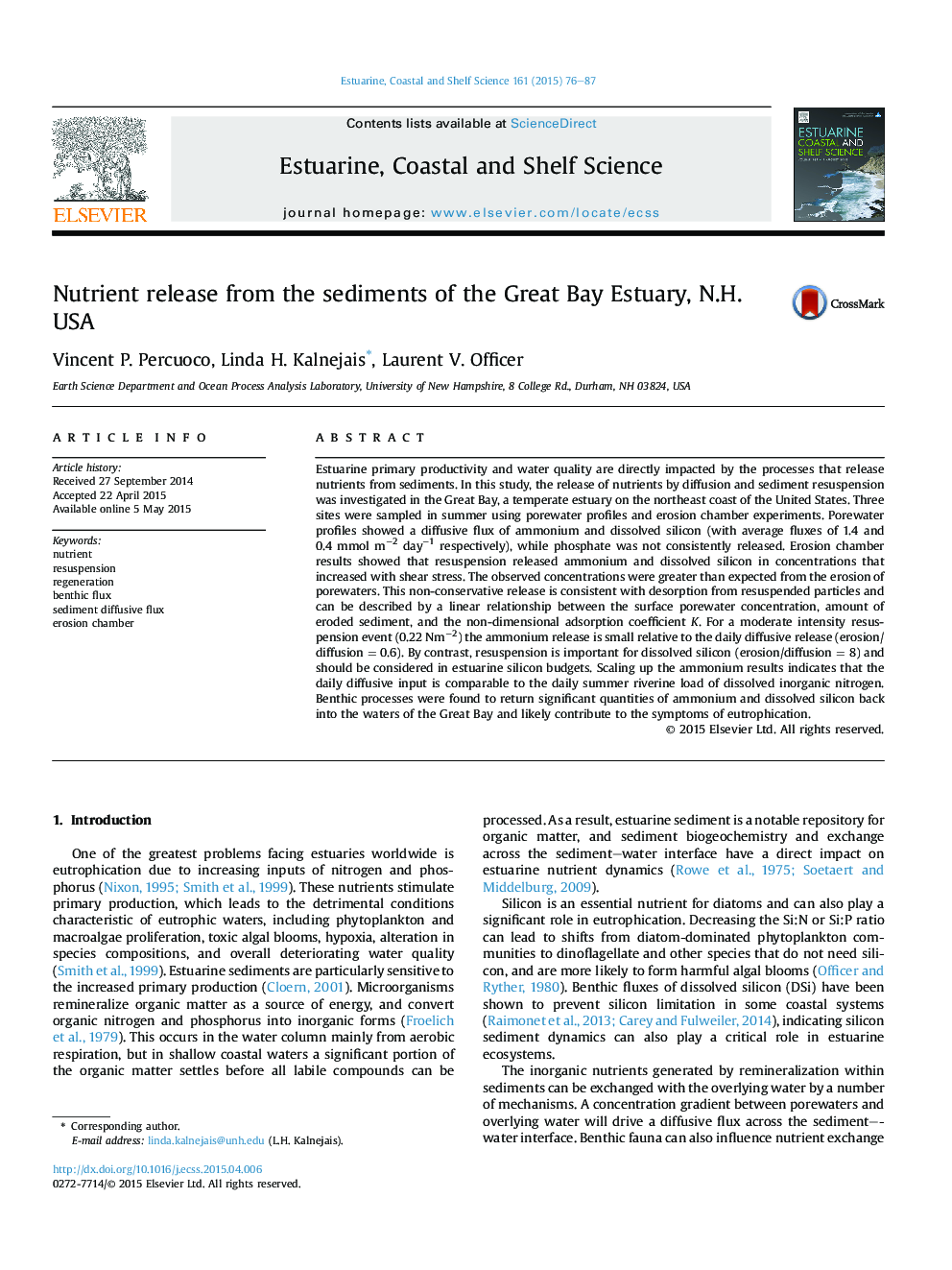| Article ID | Journal | Published Year | Pages | File Type |
|---|---|---|---|---|
| 4539464 | Estuarine, Coastal and Shelf Science | 2015 | 12 Pages |
Estuarine primary productivity and water quality are directly impacted by the processes that release nutrients from sediments. In this study, the release of nutrients by diffusion and sediment resuspension was investigated in the Great Bay, a temperate estuary on the northeast coast of the United States. Three sites were sampled in summer using porewater profiles and erosion chamber experiments. Porewater profiles showed a diffusive flux of ammonium and dissolved silicon (with average fluxes of 1.4 and 0.4 mmol m−2 day−1 respectively), while phosphate was not consistently released. Erosion chamber results showed that resuspension released ammonium and dissolved silicon in concentrations that increased with shear stress. The observed concentrations were greater than expected from the erosion of porewaters. This non-conservative release is consistent with desorption from resuspended particles and can be described by a linear relationship between the surface porewater concentration, amount of eroded sediment, and the non-dimensional adsorption coefficient K. For a moderate intensity resuspension event (0.22 Nm−2) the ammonium release is small relative to the daily diffusive release (erosion/diffusion = 0.6). By contrast, resuspension is important for dissolved silicon (erosion/diffusion = 8) and should be considered in estuarine silicon budgets. Scaling up the ammonium results indicates that the daily diffusive input is comparable to the daily summer riverine load of dissolved inorganic nitrogen. Benthic processes were found to return significant quantities of ammonium and dissolved silicon back into the waters of the Great Bay and likely contribute to the symptoms of eutrophication.
